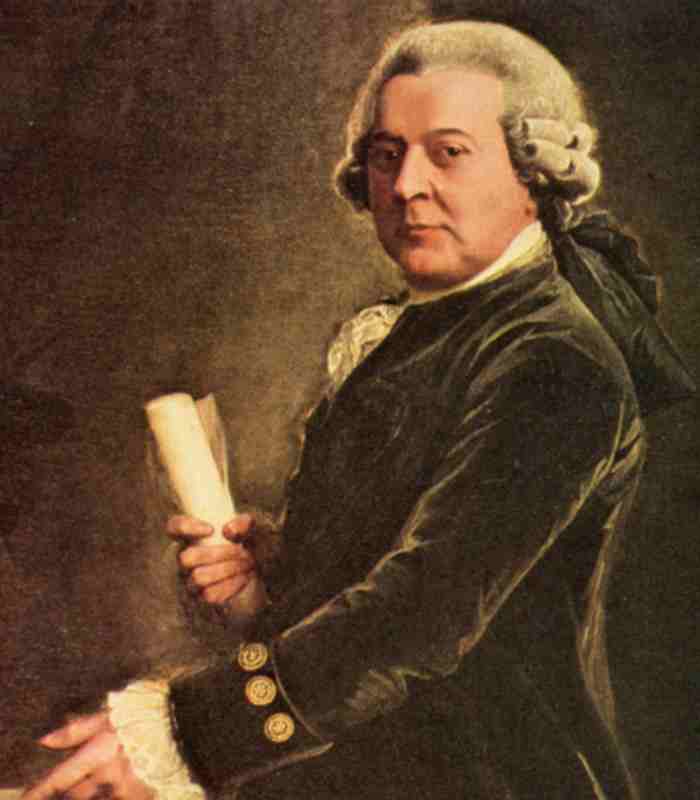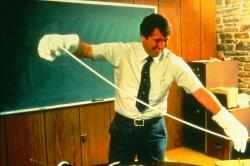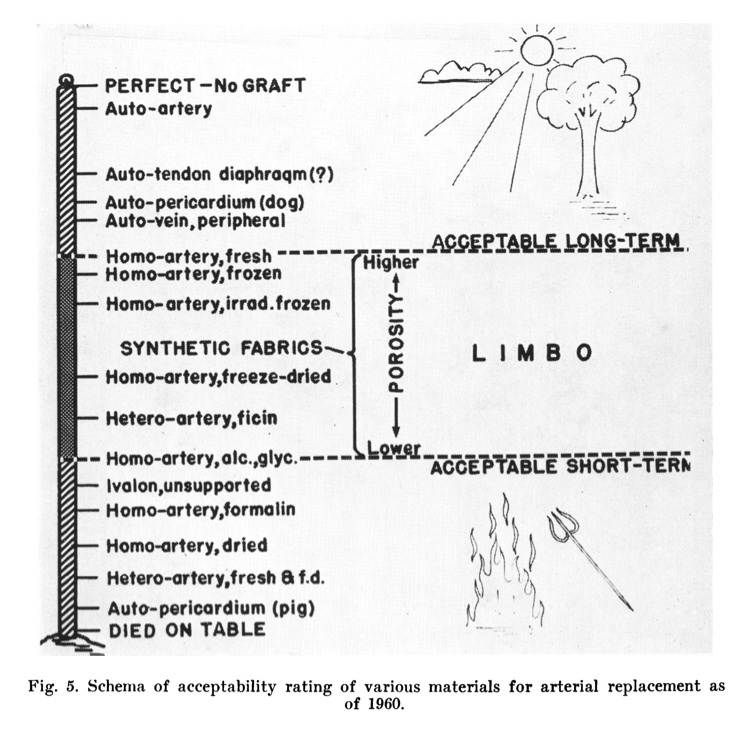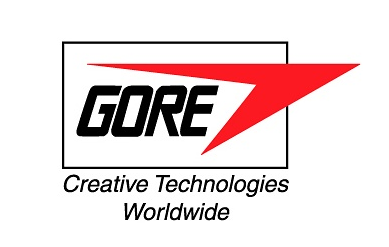Part 2:
tidge.com's
Opening Statement
This is PART TWO of a continuing series on the case:
Bard Peripheral Vascular, Inc. et al. v. W.L. Gore & Associates, Inc.
* * * * * * * * * * * * * * * * * * * * * * * * * * * * * * * * * * * * * * * * * * * * * *

It's Easy to Criticize, tidge.com,
as You Did in Part One,
But What Would You Have Done?
Well, I'm glad you asked, and that you feel comfortable enough to call me by my first name (when I hear "Mr. tidge.com," I look around for my father). Keeping in mind that I do not have the vast resources, staff, and time of Gore's attorneys, here's what I came up with, based merely on Internet searches and by educating myself. All for free, of course, I never paid for downloading any materials, which means I have a list of 20 or so items that I believe would also be helpful, but I don't know for sure because I haven't been able to read them. I will present it in the form of an opening statement, as an effective way to summarize everything (and frankly, unless you have such an opening statement, your claim charts, no matter how spectacular, will suffer for it).
Let us begin (excuse my levity in advance):
There are two stories here: one involves a remarkable person; the other involves a remarkable idea.
The remarkable person was (and still is) Bob Gore, who invented an amazing material called ePTFE, or expanded PolyTetraFluoroEthylene. The original un-expanded PTFE was invented by DuPont back in 1938 and, because it can withstand harsh chemicals, unholy temperatures, UV radiation, and all sorts of other indecencies, it has been used everywhere and in everything. It's the "Teflon" coating your cookware, the insulation in electric wiring and clothing, and the coatings on everything from the domes on gigantic buildings to tiny ball bearings.
In 1969, Bob Gore invented a way to manufacture PTFE that resulted in a new material called expanded PTFE, which he patented and marketed (in various forms) under the name "Gore-Tex." [tidgenote: preferably this last sentence would be expanded with whatever humanizing details and/or interesting factoids one could get from within Gore] Now the expansion of this expanded PTFE made the resulting material "porous," but surprisingly, it still retained all those great benefits from classic PTFE--as it says here in the stiff legalese of Bob's patent, "[t]he material has high porosity and high strength"--this was the PTFE for a new generation.
[tidgenote: preferably this last sentence would be expanded with whatever humanizing details and/or interesting factoids one could get from within Gore] Now the expansion of this expanded PTFE made the resulting material "porous," but surprisingly, it still retained all those great benefits from classic PTFE--as it says here in the stiff legalese of Bob's patent, "[t]he material has high porosity and high strength"--this was the PTFE for a new generation.
I don't know if you've ever heard of George Washington Carver, but George Washington Carver was a scientist who grew up on a peanut farm in the deep south (in fact, he was the son of slaves), and he spent his entire scientific career coming up with new and amazing ways to use peanuts: from peanut oil to binders to clothing--you name it. Well, Bob Gore was the George Washington Carver of ePFTE. After inventing this incredible new material in 1969, he and his company set forth to see how it could change things, to find those areas where the miraculous attributes of Bob Gore's invention could help, where ePTFE could solve the problems that were heretofore unsolvable ...
[tidgenote: the G.W._Carver ref. is a judgment call--if no one is taught about him anymore than it's not a good reference]
Now, let's talk about that remarkable idea I brought up before. After World War II, some doctors came up with the idea that the nylon from parachutes could be used to replace arteries. It didn't work very well. The idea of repairing damaged blood vessels with other, man-made materials was a breakthrough--the problem was finding the right material. Lots of people experimented with different materials, as it says here in this article: "There followed a rather unscientific interest in arterial prostheses during the subsequent five years when vascular surgeons raided yarn-goods stores and empirically screened all sorts of materials for use as artificial arteries." Yarn-goods stores? That's not good. [tidgenote: some horror stories here would be fun]
In the ensuing decades some scientists decided that, instead of blindly rummaging through the yarn store, it would be a good idea to define what kind of characteristics a successful vascular graft should have. One of those scientists was a man named S. Adam Wesolowski, who realized that one of the essential features was "porosity," the size of the "pores," or holes through, the material. The pores had to be big enough to allow the living flesh of the walls of the artery to quite literally grow through the graft material so that the graft becomes part of the artery. The experts will explain the details of this phenomenon, with the appropriate scientific jargon--for example, because the inner wall of an artery is the "intima," the wall formed on the inside of the graft (by growing through the material of the graft) is called the "pseudointima" or "neointima."

Those holes had to be big enough to allow the smooth growth of the neointima, but below a certain size to prevent leakage from the blood flowing through the blood vessel. It was commonly known by the doctors using the various woven fabrics in the 1960's that you had to "pre-clot" the fabric with blood before insertion--the clotting essentially shrunk the holes or "interstices" in the weave to prevent leakage. Wesolowski came up with the idea of a "gossamer" fabric with just the right size holes between just the right thickness of 'yarn' which would both prevent leakage and allow tissue in-growth.
The problem was finding the perfect "gossamer" fabric: Wesolowski and everyone else were still looking in 1969.
Now Teflon, the original PTFE, had been used as the yarn in some of these fabric grafts, and it was pretty good: tough, durable, stretched just enough, shrunk just enough, wasn't rejected by the body, its surface had very particular chemical properties which were good for anything you want to stick in a living body, ... but no gossamer weave.
Bob Gore and the people at his company saw that Gore-Tex, expanded PTFE, could be the answer. Instead of weaving something together, Bob Gore's inventive method of manufacturing PTFE created porosity in the final product, created holes in that amazing material, holes of a fineness never before imagined, pores of a fineness which would never be possible by weaving something together, a fineness that (as you will see) only an electron microscope could truly capture.
So Bob Gore and his company sent samples to various scientists, doctors, and surgeons all over the world to try out, to determine whether Gore-Tex had the perfect gossamer weave, the Holy Grail of vascular grafts. It did, and Bob Gore and his company applied for a patent.
I wish I could say that was the end of the story, because none of us would have to be here today if it was.
Some of Bob's employees went off to start their own company, just a couple of miles away from the plant, a company which would manufacture Gore-Tex vascular grafts, among other things. And, months after Bob Gore's requested experiments, that new company found one of the doctors that performed some of them, and that new company helped that doctor prepare his own patent application on using Gore-Tex as a vascular graft. Of course, that doctor had no idea how to make Gore-Tex, had absolutely no involvement with Bob's invention of the manufacturing technique that created the miracle gossamer "weave," -- quite the opposite, in fact, that doctor received, without asking, this miraculous material to test as a graft and, as such, doesn't even merit the status of those doctors who at least rummaged through the yarn store looking for a solution.
Things got really complicated after that patent application was filed. As one might expect, the ex-employees behind that new company began fighting with each other and the doctor, and soon people started filing lawsuits. Also, the Patent Office declared what's called an "interference" between the Gore patent application and the doctor's patent application, a procedure to determine who would get a patent, which managed to drag on for twenty years or so. I expect you will see and hear testimony and documents from the 30 years of lawsuits and Patent Office procedures put in motion by those ex-Gore employees who started that new company, some of whom have switched sides and switched stories over the years. You will have the unenviable task of determining what, if anything, to believe from those people and the mountains of materials generated by their lawsuits and procedural squabbling before the Patent Office.
My esteemed colleagues on the other side of the room will tell you that the doctor who filed the patent application for that start-up company "won" at the Patent Office and in court--that the doctor was ruled the inventor of using Gore-Tex as a vascular graft. But the court decisions and the Patent Office documents will show that isn't what happened at all. The start-up company drafted their patent very carefully, and had it focus on a very specific numerical range for the size of the pores, namely, bigger than 6 microns and smaller than 80 microns or so.
Now, it was already known that the holes had to be bigger than 6 microns because red blood cells, which have an average size of 5-6 microns, need to feed the growing tissue through the mesh. But while scientists had been narrowing down the upper limit on the size of the pores from 500 microns to 300 microns and steadily downward, based on pre-clotting, etc., and some had even stated it could be around the 30-80 micron range, the problem on making the proper determination of this exact upper limit was the material provided for testing, not the ingenuity of the tester. Or, to put it another way, the perfect "gossamer" weave was a theory, a target, a dream, the problem was manufacturing it.
But, based on the start-up company's careful drafting, and the procedures of the Patent Office, the dispute ended up focussing on who could prove they had the first microphotographs showing that Gore-Tex had pores in the specific numerical range of 6 to 80 microns or so, and not who invented how to manufacture such porous material, or who realized it could be the perfect gossamer weave.
Moreover, both the Patent Office and the courts found that it was Gore personnel who first realized and wrote down that it was around this 6-80 micron range of pore sizes that makes Gore-Tex work so well -- that this specific numerical range was the proof underlying Bob Gore's hunch about his porous Gore-Tex being the Holy Grail of vascular graft material. But, once again, by keeping the Patent Office focussed on who first saw the microphotographs showing the 6-80 micron pore size range, the doctor who merely tested the Gore-Tex was awarded his patent.
The judge will inform you that she instructs you on the law, you decide the facts, and that anything I or my esteemed colleagues say is not to be considered the facts, the law, or even as evidence. Quite right, and I will show you exactly where the Federal Circuit Court of Appeals ruled that a Gore employee conceived of that 6-80 micron pore range before that doctor did, and where the Patent Office decided to award that start-up company the patent based on who had those photo-micrographs.
I will also show you that there is at least one undisputed inventor in this lawsuit, his name is Bob Gore, and he invented a miracle material bearing his name that has benefitted all of our lives. I will prove that a group of intrepid scientists, doctors, and surgeons working on various materials for decades since WWII had figured out what qualities were needed to make a perfect vascular graft, but were stymied as to how to make that perfect, "porous" material. I will prove that Bob Gore and his company realized that his expanded PTFE with its fine microscopic holes could be Wesolowski's perfect gossamer weave (that was simply never possible with actual weaves), and that Gore and his company sent out samples to prove it.
And, regardless of whatever else is shown in this court room, I will show you that making Bob Gore and his company pay for manufacturing Gore-Tex for a use that Bob Gore and his company envisioned for that invention is wrong by common sense, wrong by the law, wrong by the facts, wrong, wrong, wrong.
Thus endeth the fake opening statement.
Some patent lawyers will complain these opening remarks aren't appropriately framed, or that there is no obviousness argument here, or that I play fast and loose with both the law and the facts, or that a lot of it is completely improper and/or far too argumentative. All of this may or may not be true, but the overall purpose was to demonstrate an exemplary story that might be more effective on judge&jury. Besides, there will be plenty of time to bore the jury with things they will completely forget about, and I'd rather leave them with a storyline that, if I effectively back it up over the trial, will frame how they interpret everything that happened.
Based on the willfulness determination, I can't believe that Gore framed their story this way. I say "frame their story" because it is not enough to merely "present" this story--over an eight year litigation and/or a twenty day or more trial, one might "present" all sorts of things, but if this is your story, then on every single day and in every single way, you need to be reinforcing that story. To hit it as part of some checklist entirely misses the point. Or, more exactly, such an approach ensures that the story won't work its magic on judge&jury.
I have no training or background in chemistry or materials science, I have no research capabilities besides the free material on the web, and, perhaps most importantly, I don't have the intimate insider access that a lawyer would have to Gore's people and facilities. So there are likely errors and misstatements in what I wrote above, but you get the gist. With additional time and resources, I'd perfect that gist, remove the errors, and make it an appropriate opening statement.
If I had better access to the prior art (by, i.e., paying for it), I would probably rely on and describe in more detail one or two references, but I would still avoid boring the jury with any claim chart stupidity. The fact is the parties will inevitably refer to one or more features as crucial, or essential, or whatever word they'll use, and it's only those one or two claim elements that matter. Here it's the 6-80 or 6-200 micron range of internodal distances. If Bard/Goldfarb try to pretend that other elements are equally important, you can beat the hell out of them with the 30 year history of their patent that says that this range is all that matters.
Moreover, I think patent attorneys are far too scared of being told they're "wrong" (a leftover from engineering training, I assume). For example, there are different sizes of arteries/veins, and the factors being discussed here really concern the smaller arteries/veins, and larger constructs, like the aorta, may have different considerations concerning the appropriate material for a graft. WHO CARES?!?!? If the opposing attorney actually stands up to make that distinction (or goes out of his/her way to remember and make that point with the expert days later), the jury will wonder if it matters to what the parties are fighting about, and, when it's never brought up again, will just chalk it up as one of the 3,000 unnecessary items that the opposing attorney wasted their time with ... apparently just to show how smart s/he is.
All I really want the jury to remember is that, regardless of the scientific mumbo-jumbo, we're talking about the size of holes in a porous material, and that everyone already understood that, but the problem was finding the right material with the right characteristics and small enough holes, and Bob Gore figured out how to make that material--even before we have an expert piece together the various pieces of prior art.
I don't know what happened with these people back in the 1970's. My argument here is that patent litigators must give much more to judge&jury than the endless powerpoint slides, the mind-numbing expert presentations, the jigsaw puzzle of prior art pieces--the patent litigator must give judge&jury a story to make sense of it all. And while nothing can guarantee success, a believable story should be enough to prevent a crushing defeat like a willfulness finding--where the judge&jury is saying, in essence, that they believe you yourself didn't even buy your own defenses. At the end of the day, judge&jury may not agree with your particular defenses, but judge&jury should believe that Bob Gore and company, even though mistaken, honestly believed they shouldn't be paying Bard/Goldfarb a cent for anything.
But I'm just getting started, there's more commentary on this case coming, some of which will further back up the above.
* * * * * * * * * * * * * * * * * * * * * * * * * * * * * * * * * * * * * * * * * * * * * *
